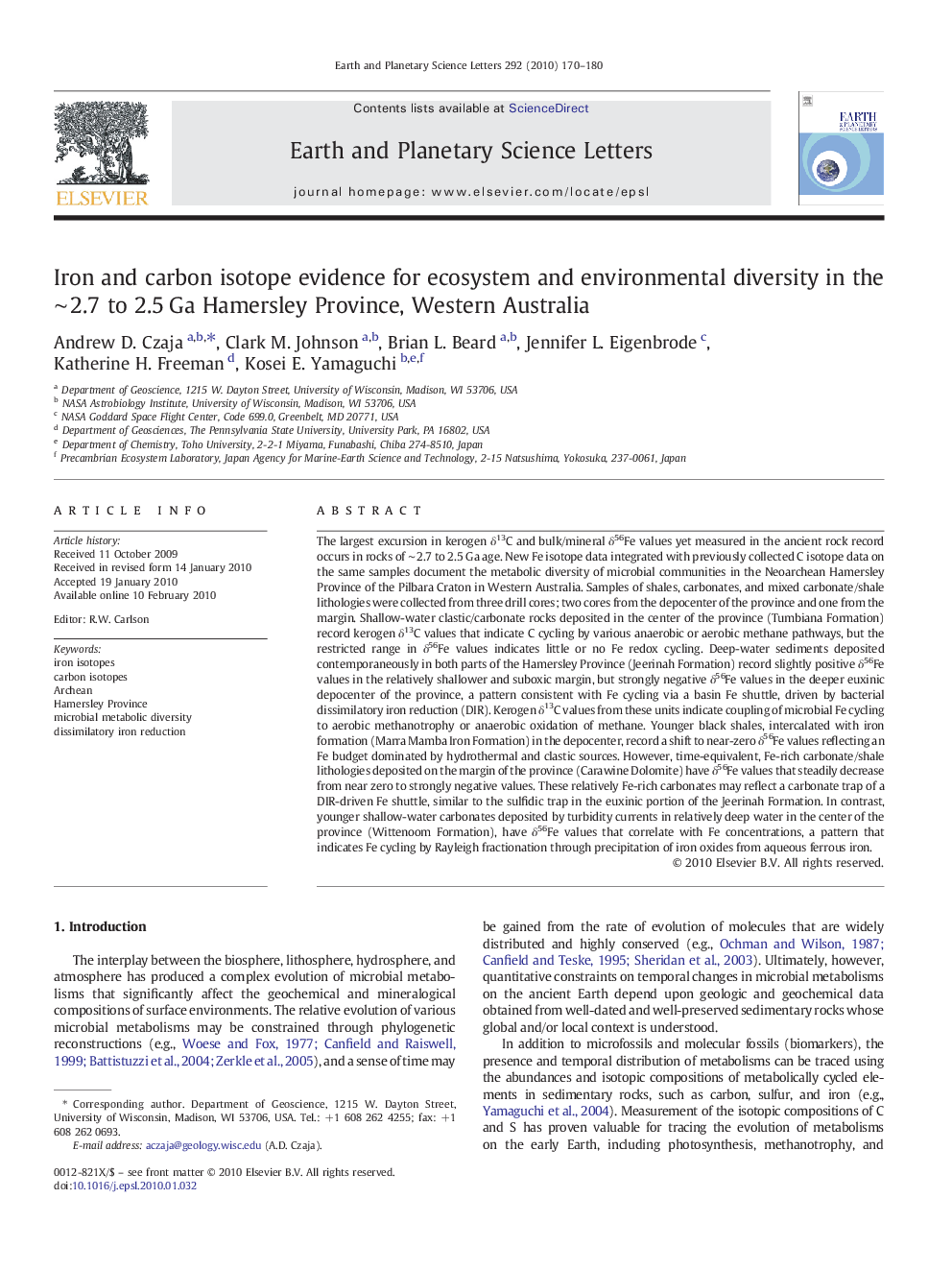| کد مقاله | کد نشریه | سال انتشار | مقاله انگلیسی | نسخه تمام متن |
|---|---|---|---|---|
| 4678644 | 1634856 | 2010 | 11 صفحه PDF | دانلود رایگان |

The largest excursion in kerogen δ13C and bulk/mineral δ56Fe values yet measured in the ancient rock record occurs in rocks of ∼ 2.7 to 2.5 Ga age. New Fe isotope data integrated with previously collected C isotope data on the same samples document the metabolic diversity of microbial communities in the Neoarchean Hamersley Province of the Pilbara Craton in Western Australia. Samples of shales, carbonates, and mixed carbonate/shale lithologies were collected from three drill cores; two cores from the depocenter of the province and one from the margin. Shallow-water clastic/carbonate rocks deposited in the center of the province (Tumbiana Formation) record kerogen δ13C values that indicate C cycling by various anaerobic or aerobic methane pathways, but the restricted range in δ56Fe values indicates little or no Fe redox cycling. Deep-water sediments deposited contemporaneously in both parts of the Hamersley Province (Jeerinah Formation) record slightly positive δ56Fe values in the relatively shallower and suboxic margin, but strongly negative δ56Fe values in the deeper euxinic depocenter of the province, a pattern consistent with Fe cycling via a basin Fe shuttle, driven by bacterial dissimilatory iron reduction (DIR). Kerogen δ13C values from these units indicate coupling of microbial Fe cycling to aerobic methanotrophy or anaerobic oxidation of methane. Younger black shales, intercalated with iron formation (Marra Mamba Iron Formation) in the depocenter, record a shift to near-zero δ56Fe values reflecting an Fe budget dominated by hydrothermal and clastic sources. However, time-equivalent, Fe-rich carbonate/shale lithologies deposited on the margin of the province (Carawine Dolomite) have δ56Fe values that steadily decrease from near zero to strongly negative values. These relatively Fe-rich carbonates may reflect a carbonate trap of a DIR-driven Fe shuttle, similar to the sulfidic trap in the euxinic portion of the Jeerinah Formation. In contrast, younger shallow-water carbonates deposited by turbidity currents in relatively deep water in the center of the province (Wittenoom Formation), have δ56Fe values that correlate with Fe concentrations, a pattern that indicates Fe cycling by Rayleigh fractionation through precipitation of iron oxides from aqueous ferrous iron.
Journal: Earth and Planetary Science Letters - Volume 292, Issues 1–2, 15 March 2010, Pages 170–180